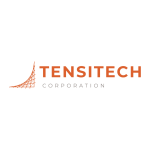Membrane Structure
With proper design, efficient engineering, fabrication and installation, end users can enjoy aesthetic free-form designs beyond imagination.
A Tensioned Membrane Structure is most often used as a roof, as they can economically and attractively span large distances. With proper design, efficient engineering, fabrication and installation, end users can enjoy aesthetic free-form designs beyond imagination.
Steady technological progress has increased the popularity of fabric and membrane roofed structures. The low weight of the materials makes construction much more economical and easier than standard designs, especially when vast open spaces have to be covered.
It includes permanent and temporary structures. This standard will be valuable to engineers and practitioners involved in the construction and/or design of tensile membrane structures.
Tensile Materials
A special form of lightweight surface structures are fabric tensile structures (FTS) formed by continuous spatially curved surfaces elements. To resist environmental loads, uplift and down-forces, these surface elements are designed with sufficient curvature to ensure that the fabric remains in tension under all conditions. A coated structural fabric consists of a woven base cloth stabilized and protected by a coating on both sides. The base cloth consists of warp threads running the length of the roll and weft threads running across width. A mesh fabric is a coated cloth with spacing between the thread bundles. With some meshes for interiors use the threads are coated before weaving.
Common materials for doubly curved fabric structures are PVC (Poly Vinyl Chloride) coated polyester cloth and PTFE (Poly Tetra Fluro Ethlene) coated galss cloth. The PVC coating contains additives that include UV stabilizers, fire retardants, colouring and antifungicides. There is a choice of protective PVDF (Fluorinated Polmer) lacquers that enhance the cleanability of the PVC membrane. It will give lifespan of 10-15 years for the Weldable PVDF type. The French Fabric supplier Serge Ferrari will coat the fabric whilst keeping the warp and weft threads in tension known as the Precontraint method. This will result on more even stretch characteristics in both thread directions than a conventional coated fabric.
ADVANTAGES OF TENSILE MEMBRANE STRUCTURES
Excellent Superior Quality
Lightweight and durable, the composition of the yarns used in tensile fabric architecture gives it strength, stability, elongation,and tear resistance. Tension Fabrics are less likely to catch on fire. The coating and varnishes applied to the base cloth provide superior fire resistance, UV resistance, self-cleaning properties, weather-resistant and colour fastness. Also it is acoustic exceptional, a layer of fabric has very little mass and therefore it cannot absorb sound to any useful degree.
Aesthetically Flexible
Highly flexible and virtually unlimited designs, fabric structures provide aesthetic and unique appeal and plenty of spaces for activities or an overall open atmosphere. Tensile structures, maintains their original shape even after years of withstanding high wind and exposure to climatic variations.
Clear Span Capability
It only requires less structural steel to support roof and it can be designed for large span, obstruction free spaces. This makes membrane structures ideal for large span cantilever architecture such as stadium roofing.
Exceptional Translucency
It provides daytime lighting that is bright and natural. It can disperse light and create shade apart form UV protection. At night, the artificial lighting spawns an ambient exterior luminescence.
Cost Effective
An excellent material, can help prevent temperature rise as well as reduce maintenance cost due to their self-cleaning properties. Its translucency and reflective quality also allow for further energy savings by providing indoor temperature stability.
Earthquake Resistant
Lightweight tensile membrane structures bear less building load than the conventional roofing materials and the membrane’s elasticity offers further earthquake resistance.
Ready to Transform
Connect With Us Today
Discover how our tensile fabric solutions can elevate your project. Contact us now for a consultation.






